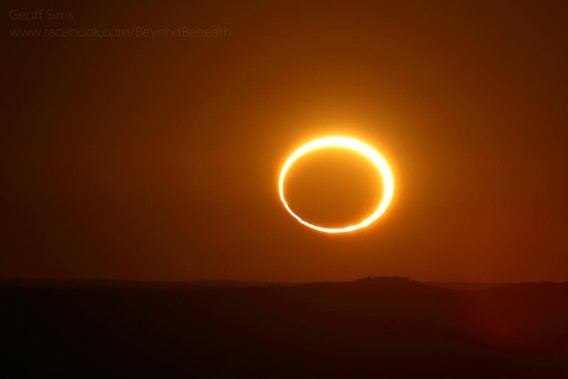Create a free profile to get unlimited access to exclusive videos, sweepstakes, and more!
Time-Lapse Video: The Rising Slow-Motion Dance of the Eclipsed Sun and Moon

Remember the amazing picture I posted last week of the squashed, eclipsed Sun rising into the Australian sky? That photo was part of a time-lapse video that, at the time, was being put together by photographers Colin Legg and Geoff Sims.
They finished it. Trust me: Take two minutes of your life, make this full screen, sit back, and be in awe of the show nature puts on for us.
Phenomenal.
This eclipse was from last week, May 10, when the Moon passed directly in front of the Sun. The Moonâs orbit is elliptical, and it happened to be at a point where it is farther away than average when the eclipse occurred. Usually, the Moon and Sun are about the same size in the sky, but in this case the Moonâs added distance made it a bit smaller, and it couldnât completely cover the Sunâs face. It left a ring, or annulus, of Sun circling the Moonâs silhouetted disk.
There were three major effects playing together to make this cosmic ballet so amazing. One is simply the daily turning of the Earth, so that we see the Moon and Sun rising. The second is atmospheric effects distorting the shape of the two as they rose. Near the horizon, this effect is very pronounced; it acts to flatten objects, so as they rise they look like they stretch out into their normal shape.
The third is the slowest, but most amazing of all. The Moon is orbiting the Earth, and that motion, as seen in this video, is in almost the opposite direction of the Sun and Moon rising. So it looks like the Sun is rising a hair faster than the Moon, changing the phase and shape of the eclipse. The eclipse goes from a full ring to a crescent, the horns pointing downward, shrinking as the two rise at different paces.
The combinationâsunrise, vertical expansion, and changing phaseâbecomes a gorgeous and smoothly surreal view of two of our nearest celestial neighbors. We see them almost every day, and even those of us who observe and appreciate them all the time will stand and gawk in awe when they work together in this way.
My thanks to both Legg and Simms for sending me their photos, and alerting me to this movingly poetic video. I hope they continue to watch and photograph the skies, allowing all of us to participate in these spectacular events vicariously through them.


























